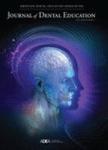版权所有:内蒙古大学图书馆 技术提供:维普资讯• 智图
内蒙古自治区呼和浩特市赛罕区大学西街235号 邮编: 010021

作者机构:Assistant Administrative Director Department of Pathology and Laboratory Medicine Temple University Hospital Associate Professor Department of Restorative Dentistry and Associate Dean for Academic Affairs Temple University School of Dentistry Vice President Science and Technology Institute for Regulatory Science Columbia MD Associate Professor and AEGD Program Director and Faculty Development Coordinator Department of Restorative Dentistry Temple University School of Dentistry
出 版 物:《Journal of Dental Education》
年 卷 期:2004年第68卷第8期
主 题:learning preference VARK adult learning
摘 要:One of the most serious challenges that dental educators face today is improving the level of student satisfaction with the curriculum and learning environment. To determine whether a particular teaching method might enhance student satisfaction with the learning process, a learning preference survey linked to sensory modalities was given to students in the four classes of the Temple University School of Dentistry. New Zealand educator Neil Fleming developed the survey called VARK (an acronym for Visual, Aural, Read/Write, and Kinesthetic) in 1998. The purpose of this study was to measure the distribution of learning preference mean scores of the dental students and note any significant differences among classes, gender, and a sample population determined using 31,243 participants on the VARK website. Results clearly demonstrate that the dominant preference distributions for the two populations (dental student and sample population) are different. In particular, the proportions of learners who selected visual or kinesthetic are significantly different for the two populations, while the proportions of learners who selected aural or read/write are not significantly different. Dental students prefer visual learning at a higher percentage and kinesthetic learning at a lower percentage than the sample population measured in the VARK website. Inter-class differences varied, and gender differences were not significant. The distribution of dental student scores shows a preference for instructors who use strong visual presentations and facilitate note-taking during lectures. Dental educators should be aware of these differences in order to explore opportunities for making the educational experience more productive and enjoyable.